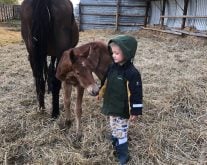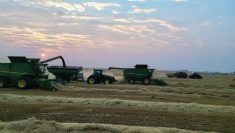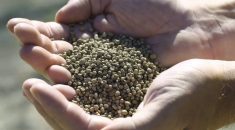When zero till seeding began in the 1980-90s, field days to demonstrate new seeders that could accomplish the task were common. Many colours of paint would make a pass down the field and farmers took off like gophers to dig around and find out where the seed was placed. A trusty garden trowel was the main tool.
In seeding on my own little place I have often found it difficult to consistently locate the seed and be sure of placement. This spring my good neighbour used his Seed Hawk to seed my barley. As we rooted around to find the seed, I was motivated to find a better way.
Read Also

Gentle treatments for pain in the neck
Heading toward year-end, people unknowingly tense up against the cold and busyness, causing neck pain that can often be treated with appropriate support and gentle mobility, athletic therapist Kathlyn Hossack says.
In the early days of anhydrous ammonia application there were many questions about its placement and the effect of the concentrated ammonia zone on soil organic matter. The U.S. had already determined that there was no deleterious effect on soil organisms but the effect on soil organic matter was not known.
We set out to change that and first had to know what ammonia concentrations were in the “hot” zone. We followed examples from the literature and dug behind individual rows to a foot or so (30 cm) with a flat spade and were able to trace the area of anhydrous. For details of the method keen Agros/CCAs can check out Hogg, T.J. and Henry,J.L. 1982. The ammonia content in soils following field application of Anhydrous Ammonia. Can. Journal of Soil Science 62: 213-216”.
It was my idea that if we could find anhydrous ammonia placement surely we could do the same for the seed.
So I took a flat spade, spent a few minutes in the shop to give it a sharp edge, and went off chasing seed. The photos (Figures 1 to 4, top of page and bottom) and captions tell the story.
I am sure there are many folks out there who have devised better ways, but this old fossil was very happy to finally have a method that worked consistently. It provides good information to determine any changes needed on depth settings of the machine.
Actually the very easiest way to establish seeding depth is to wait until the crop emerges, dig down to the seed and measure the length of the white root in the soil. But, that is a little late for the current crop!



















